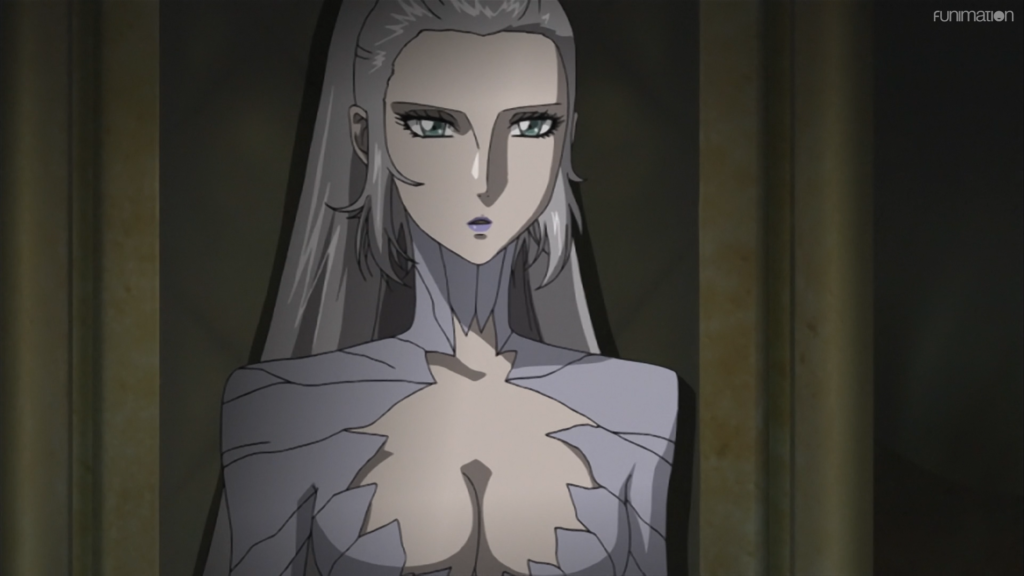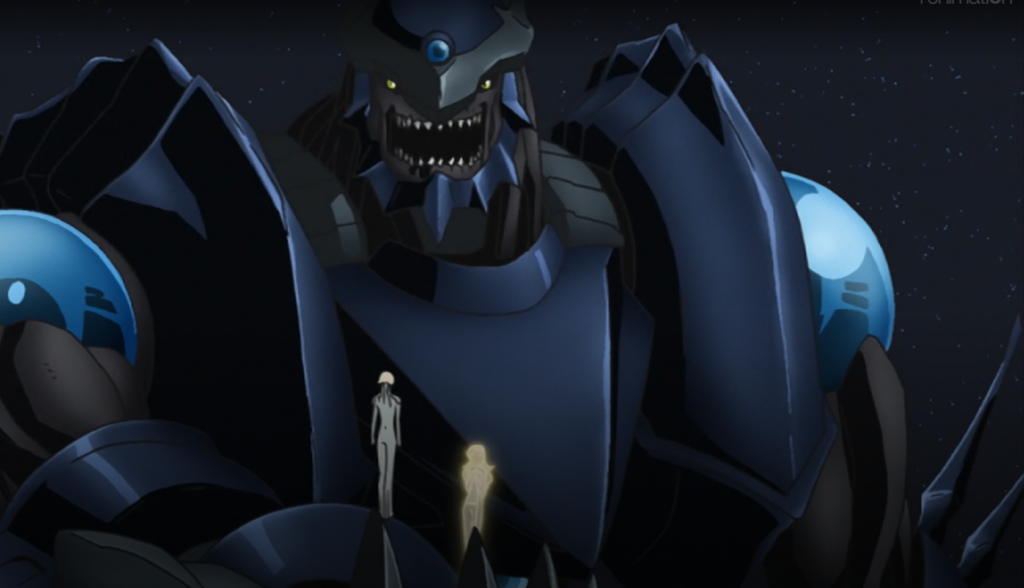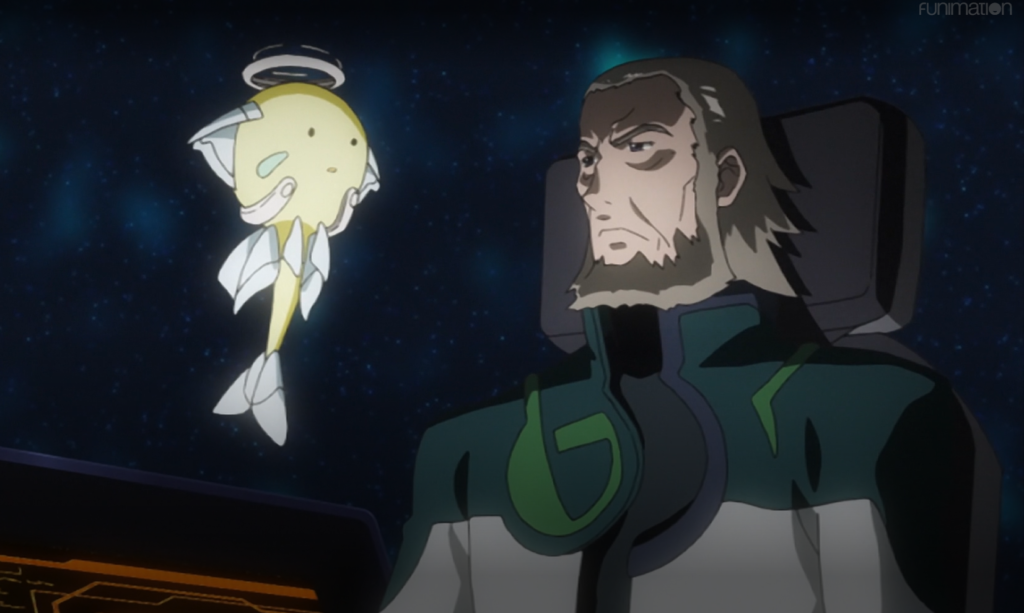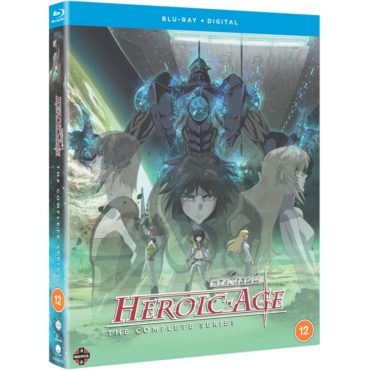Heroic Age Review
‘Long ago, the advanced Tribe of Gold vanished from the vast universe. In the void left by their departure, the tyrannical Tribe of Silver ascended to rule, forcing mankind – the Iron Tribe – to the brink of extinction.
‘Now humanity wanders the cosmos in search of a saviour. Prophesy has foretold of one who will labour for their freedoms, and on a planet of ruin, a champion is found. A feral boy named Age holds the destiny of their species in his hands and the untold power of the Tribe of Hero within.’

“Those imbeciles will be the death of us all. They’re obviously just making it up as they go along.” Lieutenant General Nilval Nephew in Episode 14
On a deserted planet, a feral boy with superhuman strength is rescued from the wreck of a spaceship by the human crew of the Argonaut (the Iron Tribe). Their telepathic princess, Deianeila, has sensed his existence over the vastness of space – and recognizes him as humanity’s prophesied saviour. Age is a Nodos: a person carrying the “essence” of a Heroic Tribesman, and can transform into a super-powered member of the Heroic Tribe, in his case, Bellcross.

They set out on their quest for the Golden Tribe – but they encounter many hazards along the way, including attacks launched from the Ant Hills of the Bronze Tribe with their myriad insectoids, and the Silver Tribe, home to the other four Nodos. Age soon finds himself fighting another Nodos, Karkinos, who has been sent by the Silver Tribe – and learns about the Frenzy, a condition that sends the Nodos into a state of insanity in which they exude unimaginable destructive powers. With the scene set for an all-out battle between the Iron Tribe (led by Deianeila’s brothers) and the Silver, it looks as if Deianeila’s hopes for a peaceful future existence in space and reconciliation between the tribes, will come to nothing. However, it seems that Prome-O, the leader of the Silver Tribe, has knowledge of the vanished Golden Tribe that is of relevance…but is she prepared to share it with the Iron Tribe?

The main interest in watching Heroic Age? It’s one of the earlier stories by Tow Ubukata, probably best known for creating the intriguing historical supernatural mystery Le Chevalier d’Eon (2006-7), and SF thrillers Mardock Scramble and Psycho-Pass 2 and 3 (2014 and 2019). But does it merit its transfer to Blu-ray? The story, a portentous science fiction space legend which, for all its widgets, space ships and mecha, is fantasy masquerading in pseudo-Gundam uniforms, hasn’t stood the test of time so well. Or, to be more accurate, it’s weighed down by the strong elements of Greek mythology and philosophy involved. The Twelve Labours which are to be completed by the titular hero, Age, are loosely based on the Twelve Labours of Hercules/Heracles. Princess Deianeila and Iolaous bear names plucked from Heracles’ legends as well: the former was the hero’s third wife and the latter his charioteer and friend (add in the princess’s arrogant brothers Meleagros and Atalantes.) Whereas the Five Tribes: Gold, Silver, Bronze, Heroic and Iron come from Ancient Greek poet Hesiod’s concept of the Five Ages of Man in Work and Days.
When does an epic anime battle become an epic yawn? When it’s stretched out over way too many episodes. The battles between the five Nodos in Heroic Age soon lose their interest, in spite of the fact that we’ve been introduced to the participants in their non-monstrous forms and are fully aware that there’s much more at stake than a super-powered punch-up in outer space.

The main problem – apart from dragging out these battles to interminable lengths – is the failure of the script to present us with genuinely engaging character interactions. The mythic aspirations of the story weigh it down and in spite of some attempts to make the protagonists interesting: Aneasha is obviously attracted to Iolaous; Dejaneila’s brothers are arrogant idiots; veteran Captain Mobead is stern but wise, they’re very basic characterization-by-numbers. The main draw of Gundam Seed and Gundam Seed Destiny (not Tow Ubukata’s story) and Le Chevalier d’Eon is the people who are flawed and far from predictable or dull (even if not always likable!). Once Age – the feral yet sweet-natured manchild – changes into his Nodos form, all the intriguing questions raised by his existence vanish, never to be properly addressed again. He’s just the boy who changes into a monster, fights to protect humanity, and then changes back. He’s also the character that the series is named after – so it would have been interesting (at the very least) to see him change and develop after his encounter with the Iron Tribe and the other Nodos.
The character designs by Hisashi Hisai (best known for his designs for Fafner and the hugely popular Gundam Seed (2002+) are a clear indicator that the team were out to capture the Gundam Seed audience. Hisai’s human characters are very similar to those he created for Gundam Seed – although the Silver Tribe are more than a little reminiscent of Leiji Matsumoto’s female characters in space sagas such as The Galaxy Railways and Space Battleship Yamato. Other trappings that bear similarities to the Gundam universe include the Iron Tribe’s mobile suits piloted by men and women alike, and Bee No Bee, Captain Mobead’s very cute and small AI assistant brings to mind Haro, the mechanical mascot of the Gundam franchise.

Plus points – a powerful orchestral/choral score by Naoki Satou (X TV and Eureka Seven) which heightens the emotional moments and makes the space battles truly epic (try watching without the sound to experience the difference!). The Opening is “gravitation” by angela, a song typical of its time for a space opera, but none the worse for that and the Ending is “Azurite” by Tae Urakabe. In Episode 15 Yui Ishikawa (Deianeila) sings a second version: “Azurite ~ for luster star Deianera” and at the end of the final episode comes a third version:”Azurite ~True grace~” by Tae Urakabe again.
The CG used for the spaceships and weaponry from Studio XEBEC looks dated – but the scenes depicting deep space are suitably starry and impressive.
The US script (Brandon Potter, J. Michael Tatum and Monica Rial) is a distinct improvement on the original which – in the subtitles, anyway – comes across as awkward and stilted. The voice actors do their best to bring the scripts to life in both versions – but I’d single out Christopher R. Sabat and Greg Ayres as Karkinos and Mehitak in the dub for their sympathetic portrayals of two of the ‘enemy’ Nodos, as well as J. Michael Tatum as the childlike Age himself. In the original Japanese version, Yui Ishikawa (Mikasa in Attack on Titan) deserves praise for giving Princess Deianeila the dignity her role as mankind’s emissary requires (although she does tend to cry a lot).

Back in 2007, if Heroic Age had received a R2 release, we would have been reviewing this in separate volumes, all twenty-six episodes spread over six or seven DVDs released at monthly intervals. In Manga Entertainment’s R2 release, the Blu-ray (reviewed) has the material neatly packed into three discs. As before, no complaints here about the excellent picture and sound quality – but the white subtitles are very difficult to read for those listening to the original Japanese version (not the first time I’ve made this complaint, sadly). The only extras are textless OP and ED and some trailers.
Heroic Age was released in the same Spring Season (2007) as Claymore, Darker than Black and…oh, a little series called Tengen Toppa Gurren Lagan. The space battles are on the epic scale but the characters are so thinly developed that it’s difficult to care about what happens to them – and that’s a major flaw in a story that purports to be about mankind’s future. However, if you can make allowances for this and the glacial pace, Heroic Age eventually gets its act together and goes for a fittingly impressive climax in which the animators pull out all the stops.


